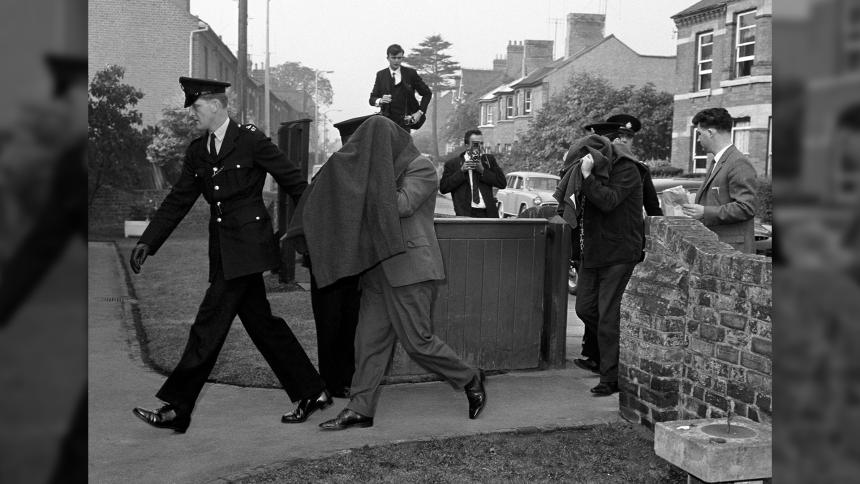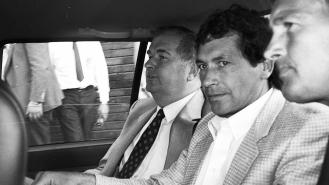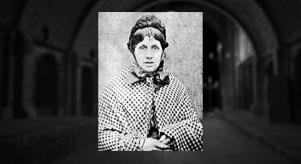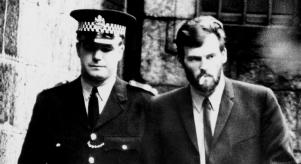
The Great Train Robbery: Six decades later
‘A robbery has been committed and you'll never believe it... they've stolen the train!’
This iconic radio broadcast crackled over police radio at 4:20am on 8th August 1963. It was the first alert sent out about a truly audacious crime that became known as 'The Great Train Robbery'.
It was one of the most infamous, daring and remarkable heists in history, with many people referring to it as ‘The Crime of the Century’.
An overview of events
A gang of 17 men plotted and carried off a daring raid the scale of which Britain had never seen before. In the middle of the Buckinghamshire countryside, 15 of the gang intercepted a mail train on its way from Glasgow to London.
Their intention? To steal the £2 million in cash on board, divvy it up between them and go on the run with it, leaving the police in their dust. With careful planning and effective execution of that plan, the men achieved their first two goals. Unfortunately for them, they largely failed the getting away with it part.
The plan
In order to give themselves the best chance of escaping without being arrested, the men knew that meticulous organisation, clever planning and watertight logistical knowledge were all vital.
Bruce Reynolds effectively masterminded the dastardly idea, with Charlie Wilson, Gordon Goody and Ronald ‘Buster’ Edwards all working closely with him. The four men hatched their plan based on insider information given to them by a senior security officer at Royal Mail (whose identity was never discovered).
While all accomplished thieves, the men knew little to nothing about the best way to rob a train. So they recruited help from a London gang known as 'The South Coast Raiders'. Tommy Wisbey, Roger Cordrey, Bob Welch and Jim Hussey, impressed by the size of the job, signed up. Soon, other men, including Ronnie Biggs, were recruited to carry out tasks as the job evolved.
The plan was to lie in wait at Bridego Railway Bridge in Ledburn for the train. They would tamper with signal lights, forcing the target - a travelling post office (TPO) ‘Up Special’ mail train packed with money - to come grinding to a halt. The men would jump aboard, load up the money, drive the train down the track a little way, jump out with the cash and escape.
The execution
The robbery itself went, pretty much, as the men had planned it. The gang had to think on their feet a little when obstacles arose, but they managed to stop the train, get aboard, take control, load the money, get off the train and escape with almost every available banknote.
The biggest issue that the robbers had was the train’s driver, Jack Mills. He refused to surrender control of his train, gallantly fighting back when they tried to board. He got an iron bar round the back of his head for his troubles.
The gang had recruited a former train driver to work with them, but on seeing the controls of the newer form of locomotive, the man had to admit that he was unable to move it. So the men had to force the beaten Jack Mills to drive it along the track to the drop-off point.
Within 15 minutes of stopping, the men had moved 120 mailbags of cash off the train and were good to make their escape. This was just half an hour after the robbery began.
While no one was killed as a direct result of the events of that morning, Jack Mills got brain damage from his injuries, never fully recovered and suffered until his death just seven years later.
The getaway
The men loaded the cash into their fleet of a waiting Austin truck and a pair of Land Rovers. Driving an hour to a hole-up they’d found near Aylesbury called Leatherslade Farm, the men split the money 16 ways and planned to wait until the heat died down. It was Thursday morning. The plan was to wait out the weekend and make good their escape on Sunday.
Listening to the police radio, the men soon realised that the police were working on the theory that the gang had hunkered down locally instead of disappearing - exactly what they had done. So they needed to bring forward their getaway.
An accomplice had been tasked with burning Leatherslade Farm down after they left to destroy any potential evidence, but failed to do so. Police soon found the abandoned farm and the evidence the men left behind.
The money
The gang ran off with £2,595,997 packed into 636 packages, stuffed into 120 mailbags. Most of the notes were £1 and £5 notes, with some ten shilling notes and a little Irish and Scottish cash. There were 128 bags aboard the train, so eight were left behind. This wasn't an oversight; they were left due to the strict time constraints that the plan laid out. It's believed that the amount left on the train totalled a shade over £130,000 (worth around £2m now), or around 5% of the overall total cash onboard.
The aftermath
The police investigation after the robbery was slow, but drip-fed evidence kept it alive. Eventually, task forces discovered an informer who was prepared to give up the identities of the gang. Investigators, now aware of who they were looking for, managed to capture most of the robbers, despite them all going to ground and many fleeing abroad.
However, while most were arrested and imprisoned, three of the men evaded capture entirely. Two of the robbers, Harry Smith and Danny Pembroke, were eventually identified, but the third was not.
Now, almost all of the gang has long since been released from prison and died. Their legacy, however, lives on long in the memory as an indelible part of British criminal history.








